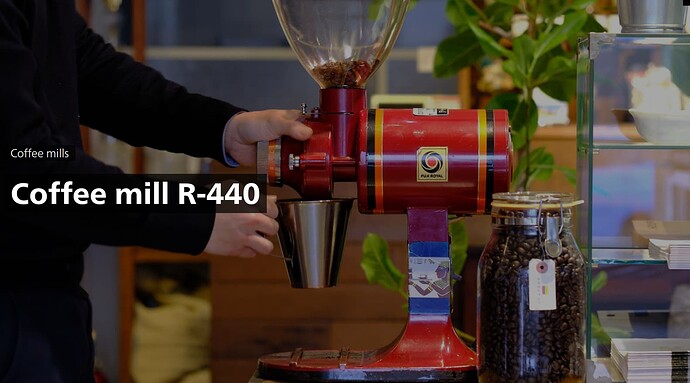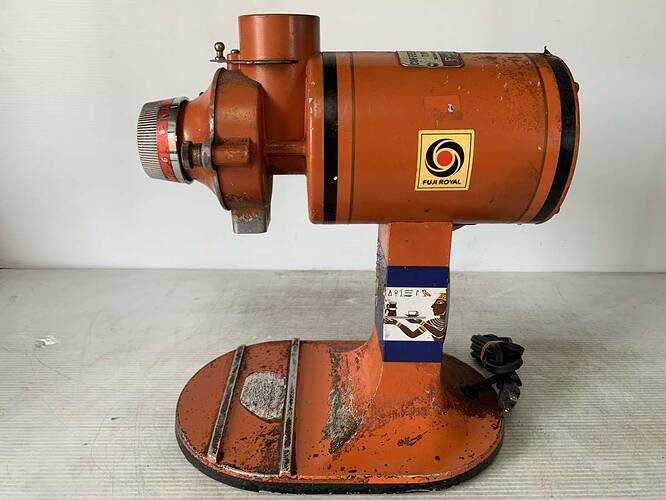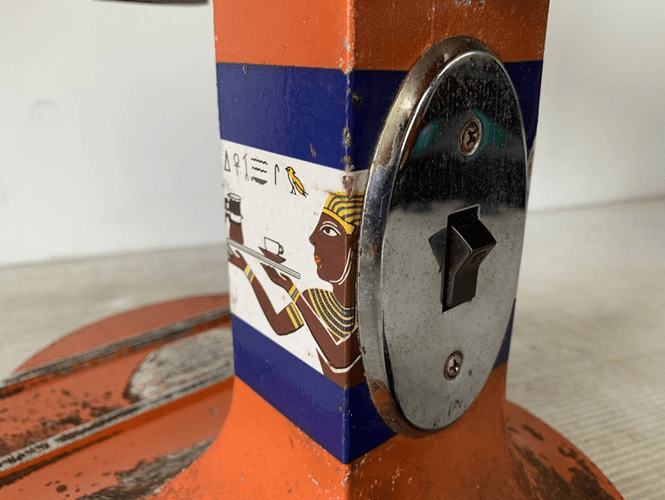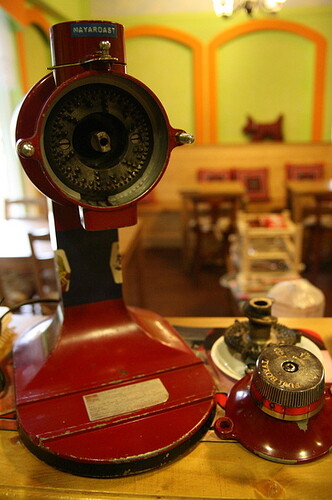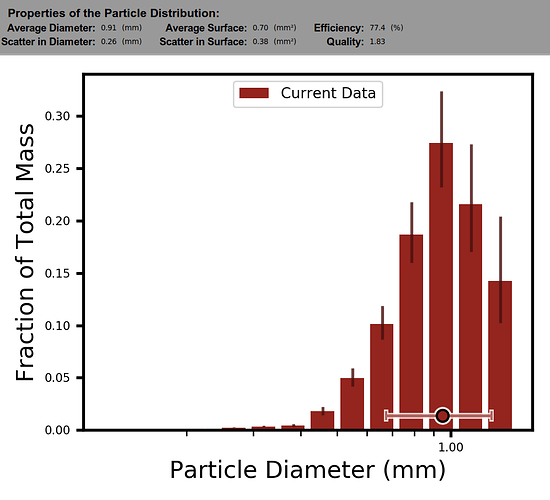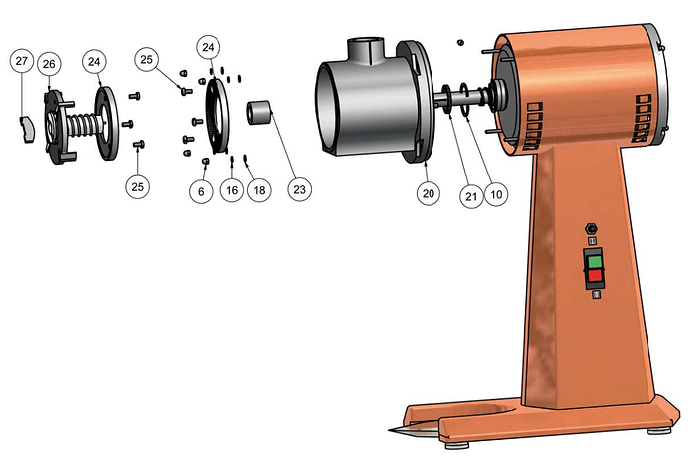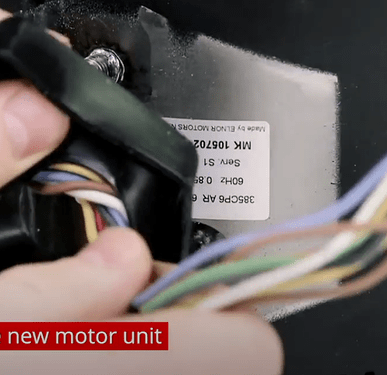I’m super excited for you. Your coffee is going to be sooo much better, and in terms of home grinders you can actually put in your kitchen, there isn’t really anything better that you can buy.
In related news, I also bought a coffee grinder today. It weighs over 30 pounds, is over 2 feet tall, and definitely won’t fit in my kitchen. It’s also super fugly to boot.
What is the purpose of the flap in an unflipped flap forte?
The flapper is a rubber piece that extends down into the plastic grind chute by default. The piece with the coffee on it in this pic below. The problem is that coffee gets trapped around it.
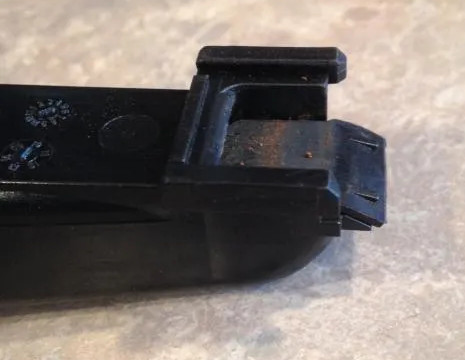
You turn it upside down so that it’s up and above the chute:
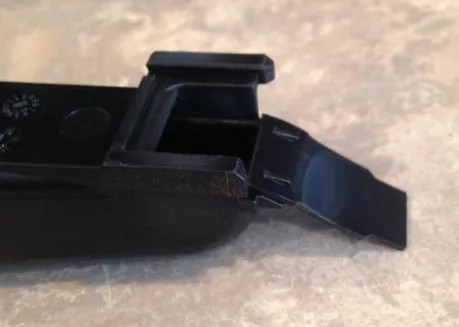
You might not even need to do this though. Try doing RDT first and see how well that works.
Cool pictures.
I guess my question is why it’s there in the first place? I…e the designers obviously thought it served a useful function.
I think it’s to control the way the coffee comes out for a portafilter. The grounds hit a deadened surface instead of hard plastic before falling straight down. I imagine it reduces the amount of ricochet and randomness in the output stream.
Been scouting these things for a while, and out of sheer curiosity I bought the American market rebadge (because it’s 120v and doesn’t require a stepdown transformer):
That’s the Fuji Royal R-440. It’s the “standard” for professional coffee grinding in Japan and has existed since 1965. That’s crazy because it seems like pretty much all coffee hardware that people use today was invented within the last 20 years.
The one I’m getting isn’t nearly as cool because it doesn’t have that insane Egyptian coffee art. Is that a residential light switch plate? Only the Japanese would do something that bold and stylish on a coffee grinder. However, it should function identically if it functions properly (which is tbd). These have huge Toshiba motors and huge cast ghost tooth burrs:
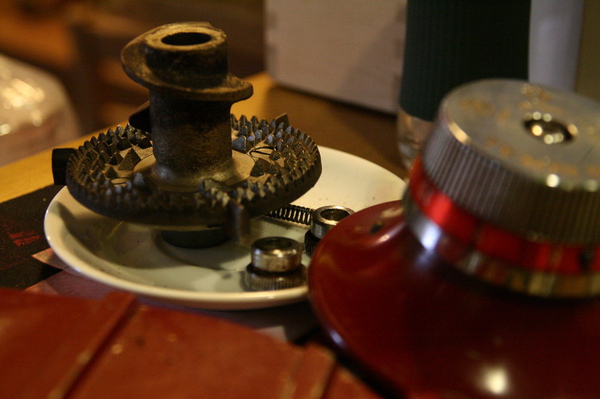
They absolutely cannot grind fine. In fact, a smaller dose V60 might really be pushing it. If I end up using it as a dedicated cupping or Chemex grinder, that’s fine by me though. Seems like a great pairing for the Chemex actually due to MOJO and being ancient in coffee years. I’m mostly curious about the ghost tooth cup profile; not only do these things create incredibly unimodal grinds, they also seem to “shape” more spherical particles as opposed to shaving flats.
One of the great things about the app is you can run stuff that random people post online…sort of. They need a reference piece in the photo, and the grinds need to be separated enough that the app doesn’t group them into single clusters. I still haven’t perfected the technique for the app, but here’s a subsample I ran from an R-440 grind that someone posted:
Super weird thing imo where Lance is recommending the SSP Ode in just about every video with the Lance Guarantee®, he reviews it and pretends to not know what a PID motor is, someone explains it to him in the comments, and he says “yeah I know what it is but they asked me not to say anything.” Wut. So what else did they ask you to say / not say? I mean that’s weird, right? PID controllers were invented in the 17th century and it’s no mystery how they work.
I now see what you’re saying about the steel burrs being included with the AP. That appears to be unique to the Australian market. Converting to USD, it seems like you’re getting a pretty sweet deal. That’s $761 for both burr sets and a portafilter holder, whereas here the Forte BG w/steel retails for $899.
Nice! I think it should be arriving today.
Mrs rugby was less than impressed by the price.
“Wait what. Its $1000 and it doesnt even make the coffee??”
However shes been talking to a barista friend who took my side. Hopefully the high quality of the coffee will win her over.
Just wait until you have it in pieces on your kitchen table with aluminum foil and a dry-erase marker kit and are telling her about coplanar alignment.
Shes already worried. Lol.
“How to remove the light switch.”
I am completely infatuated with this thing. It no joke has a god damn light switch with home decor chrome switch plate covering a completely inexplicable painting of an ancient Egyptian serving coffee with some hieroglyphics. Maybe this is the actual technology the aliens left at Giza and the other stuff is a distraction?
Today I’m having small batch Uganda coffee that was aged in a bourbon barrel (Woodford Reserve). Roast is darker than I’m used to, maybe full city. Anyway, it’s interesting because there isn’t much going on up front, but it has a huge aftertaste that’s unmistakably bourbon (it literally tastes like hot bourbon). Basically the opposite of most coffees I drink which tend to hit bright and then fade. Anyway, I consider this novelty / flavored coffee that would be great at a derby party or whatever.
Got my commandante today and am currently drinking the first cup - pourover at the default setting 24 clicks. This is the first time I’ve ever tasted clearly underextracted coffee I think. Going to have to go finer.
Also I think my experience with the tabbed hario v60 filters was from a bad batch or something. I ordered 30 packs and have just started in on the second pack in the last few weeks. This pack is very difficult to clog and has been really fast most of the time, comparable to my sibarist filters.
And I’m on day 2 with my new Fellow Stag EKG kettle and loving it. Previous kettle was a bonavita and works fine but I saw an exceptionally consistent pour on reddit and there was chatter abouyt the controlled flow rate of the stag and I was convinced to buy. My pours are much more consistent now and it seems to be making a difference.
Wasn’t going to post about it until I was more certain but same for me. I think they changed something.
While reverse engineering some of these electric grinders, I noticed that things haven’t really changed much over many decades. Check out this vintage Hobart (1940):
The R-440 is a straight rip of this popular design down to the ball top hopper, mailbox style grinds catch, and even the light switch.

I’ve looked at a fair number of these now going all the way back to early art deco period. Even the motor specs are largely unchanged: mostly 1-phase induction motors with a single capacitor start, anywhere from 1/6th to 1/2 HP, and 1400-1800 rpms.
In terms of the mechanical drive system, it’s just a spring-loaded feed auger on the motor shaft holding the outer burr that you push back against the spring and toward the inner burr with the adjustment knob. In terms of mechanical complexity, it’s actually super simple. I mean the EK43 is exactly the same type of grinding machine, beautiful in its simplicity:
Why does it cost so much? For starters, the motor they’re using delivers an astounding 1,300 watts (1.74 HP) at the same rpm range:
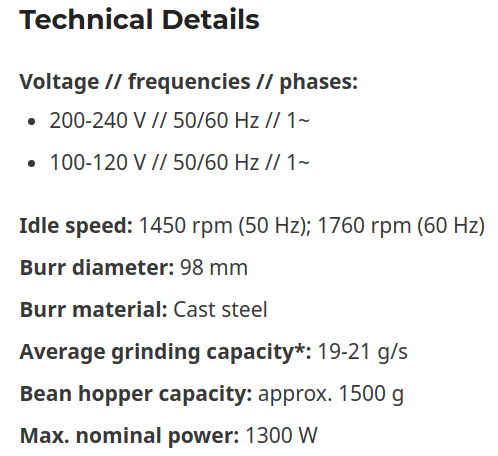
From what I’ve seen, most coffee grinder motors seem to come in at 250 watts (1/3 HP) or less. The R-440 is a little higher at 360w (0.48 HP). The EK is way off the charts on this spec given that it’s producing the same rpms. Torque is (proportional to) power / speed, so a large power increase isn’t as impressive if accompanied by a large increase in rpms, but the EK speed is the same as most other electric grinders. I was able to find the motor supplier watching an EK teardown video:
That’s Elnor Motors NV out of Belgium, and their specialty seems to be custom motors built to production spec. I have no idea what that costs, but comparable motors on Grainger (1-phase capacitor run-start with 1.5 to 2 hp and ~1700 rpms) appear to be in the $400 to $600 range for non-quantity buys. For comparison, the Baratza Forte/Vario motors deliver 240w at 1950 rpm (no load) and cost $40 to replace.
Help me understand the amount of coffee I should be using.
My understanding is that an espresso shot is approx 15g. So a normal “black coffee” when you order at a cafe is 30 to 45g right?
Yet every recipe I see online. Especially for aeropress. Calls for 13 to 15g.
What’s the deal here? How do i put together a decent cup of coffee with these online recipes?
You are using Aeropress or some other method? For a pour over, try starting at 1g of coffee to 16 mL of water. A “normal” brew would be 20g coffee: 320 mL of water poured.
That’s a lot of coffee. I only dose 18 to 22 grams. Aeropress notoriously makes only a small amount of coffee so 15g sounds right.

